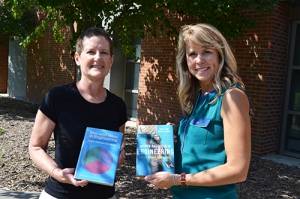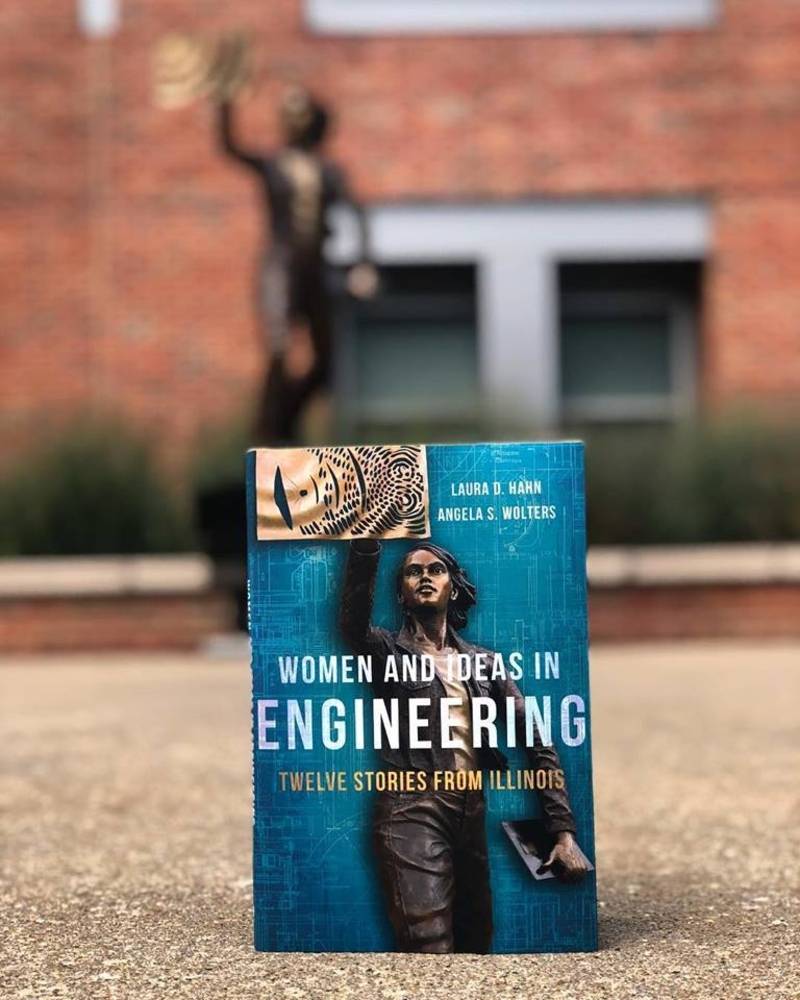“Don’t you think we should write a sequel?” Laura Hahn, Director of Academy for Excellence in Engineering Education at the College of Engineering, UIUC, asked her colleague Angie Wolters one day at her desk. She was holding an old book that had been collecting dust for many years in her office, but to which she had never given much thought. That book, published during the University’s 100th anniversary in 1967, was titled Men and Ideas in Engineering – Twelve Histories from Illinois. Wolters, Director of Women in Engineering at UIUC, replied with a resounding “Yes, I think we should.” After many weekly meetings, interviews with inspiring women, and weekends of writing later, Women and Ideas in Engineering – Twelve Stories from Illinois was published, 50 years after its prequel, and shortly after the University’s 150th anniversary.
 Since its publication this year, Hahn and Wolters told me that their book has only been greeted with enthusiasm and positive feedback in the College of Engineering. For some, the 1967 book had been lost through the years, not raising much attention. However, other women who have been around the college longer have commented to the authors that this old text was required reading in their freshman engineering class. For them, the sequel highlighting women engineers was a long-awaited tribute to the past engineers whose stories may have otherwise been forgotten throughout history due to the customary gender biases of the field. “Finally! The sequel!” Wolters remembers one female interviewee exclaiming.
Since its publication this year, Hahn and Wolters told me that their book has only been greeted with enthusiasm and positive feedback in the College of Engineering. For some, the 1967 book had been lost through the years, not raising much attention. However, other women who have been around the college longer have commented to the authors that this old text was required reading in their freshman engineering class. For them, the sequel highlighting women engineers was a long-awaited tribute to the past engineers whose stories may have otherwise been forgotten throughout history due to the customary gender biases of the field. “Finally! The sequel!” Wolters remembers one female interviewee exclaiming.
According to a 2016 publication by The American Society for Engineering Education, women make up just 20.9% of engineering undergraduate degrees. Though this number is increasing, it’s slow, and in some years, stagnant growth is less than ideal. Wolters attributes some of the barriers in engineering for women to a lack of representation in the field, though she’s optimistic this is changing. “I still hear students say, most girls were inspired by a father or a grandfather. Inspiration continues to come from male role models, but the good thing now is those male role models are seeing their daughters and granddaughters as people to inspire and push towards this area. I think we’re seeing that specific trend change.”
Despite the fact that women make up the minority of engineers compared to their male counterparts, this didn’t stop Hahn and Wolters from finding plenty of women engineers from Illinois to include in their book. Though the original intention was to mirror its prequel with 12 stories of engineering faculty, after compiling an extensive Excel spreadsheet of inspiring female stories, they knew this would have to be modified. Eventually, Hahn and Wolters narrowed the list down to 36 women to include in the book, grouped into 12 themes. Unlike its prequel, Women and Ideas in Engineering – Twelve Stories from Illinois highlight not just faculty, but students and alumni as well.
The book’s main purpose is to be used as a recruitment and retention tool for women engineers in the College of Engineering. The college offers extra programming for women, such as a pre-orientation to help new women engineering students feel connected in community before other students arrive. Hahn’s advice for new women engineers is to do just that, to find a community of friends and classroom colleagues to be connected with early on in their degree. The orientation has been successful — those that attend the pre-orientation are 30% more likely to graduate from the College of Engineering than those who don’t. Hahn and Wolters will also use the book as a text in their course, “Women and Ideas in Engineering,” open to all students in the college. As part of their final project, students will conduct their own interviews with inspiring women engineers. Their hope for the class is that students not only work on their writing and interviewing skills, but to step outside of the technical sphere to work on self-assessment, realization, and to feel inspired.

Regardless of the localized target, the book is receiving nationwide attention. Amy Bix, nationally celebrated author of Girls Coming to Tech! A History of American Engineering Education for Women, gave the book positive reviews and calls it a significant contribution to the knowledge about the early entry of women into these fields. Hahn and Wolters hope that these stories can reach to inspire not only those within the college at Illinois, but for women engineers or aspiring engineers of all ages. As such, they’ve created a companion coloring book for the upcoming generation of women engineers. The coloring book, as well as chapter excerpts, will be given away for free at upcoming engineering events, such as the popular Engineering Open House. They hope to increase their reach by making the book as accessible as possible. Part of that goal is accomplished by publishing weekly “Women Crush Wednesdays” on a blog run by Wolters, to continue publishing stories that weren’t included in the book. The additional stories are categorized by majors, and can be used as a way for women engineers to decide which major is best for them.
Hahn and Wolters will be giving a talk this week about the book and related topics at the University Archives in Room 146 on September 19th, from 7 to 8:30 p.m. The talk is free and open to the public and will include a book signing. For those interested in buying a copy, the book is available at Barnes and Noble in Champaign, online, and for rental on campus in Grainger Library.
Photo of authors from the University of Illinois iStem website. Others from Facebook.








